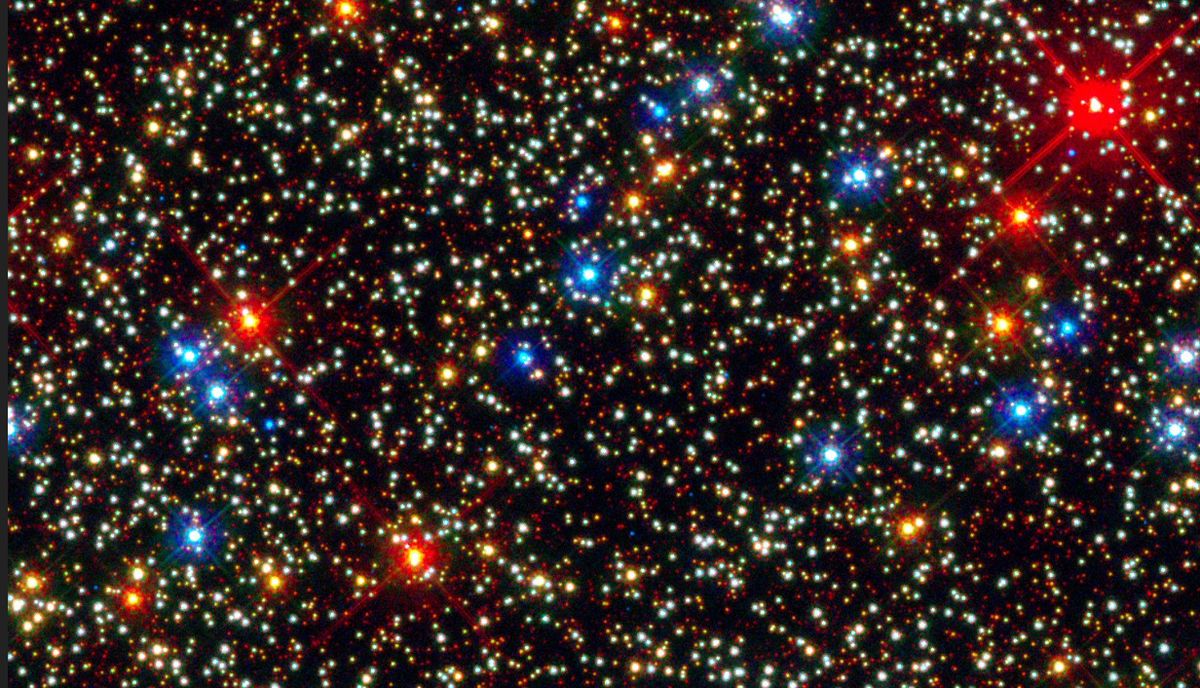This "missing" black hole may not exist 🕳️
Follow us on Google News (click on ☆)

Illustration image from Pixabay
Astronomers thought they had discovered an intermediate-mass black hole at the heart of Omega Centauri, a dense star cluster in the Milky Way. However, new analyses suggest the presence of a group of stellar-mass black holes rather than a single intermediate-mass black hole. This discovery was made possible by using data from pulsars, those rapidly rotating neutron stars that act as cosmic lighthouses.
Intermediate-mass black holes are considered a missing link in the evolution of black holes, connecting stellar-mass black holes to supermassive ones. Their detection is crucial for understanding how black holes reach colossal masses. Previous research, based on the movements of stars in Omega Centauri, had suggested the presence of such a black hole. However, the analysis of pulsar data has allowed for a reevaluation of this hypothesis.
Pulsars, due to their rapid rotation and regular emission of radiation, serve as valuable tools for measuring intense gravitational fields. Variations in their timing can indicate the presence of black holes. This method has allowed researchers to distinguish between the gravitational effect of an intermediate-mass black hole and that of a group of stellar-mass black holes in Omega Centauri.
This study opens new perspectives for research on black holes and pulsars. It highlights the importance of star clusters like Omega Centauri for understanding the formation and evolution of black holes. Researchers remain optimistic about the future discovery of intermediate-mass black holes, thanks to improved observation techniques and the analysis of pulsar data.

The dense star cluster Omega Centauri.
Credit: NASA/ESA/Anderson/van der Marel
The results of this research, accepted for publication in Astronomy & Astrophysics, mark an important step in our understanding of black holes and the mechanisms that govern their formation. They also demonstrate the usefulness of pulsars as tools for exploring the mysteries of the Universe.
What is an intermediate-mass black hole?
Intermediate-mass black holes occupy a special place in the family of black holes. They lie between stellar-mass black holes, formed by the collapse of massive stars, and supermassive black holes, which reside at the center of galaxies. These black holes are considered a missing link in the evolution of black holes.
Their mass, estimated to be between 1,000 and 100,000 times that of the Sun, makes them objects of study for understanding how black holes reach colossal masses. However, their detection is particularly difficult due to their discreet nature and the absence of surrounding matter they could consume.
Intermediate-mass black holes could play a key role in the formation of supermassive black holes. They could be the result of the merger of several stellar-mass black holes or form directly from the collapse of giant gas clouds in dense star clusters.
The search for these black holes is therefore crucial to complete our understanding of the evolution of black holes and galaxies. Star clusters like Omega Centauri, with their unique conditions, offer a privileged field of study for this quest.
How do pulsars help study black holes?
Pulsars are rapidly rotating neutron stars that emit beams of radiation from their magnetic poles. These emissions, extremely regular, allow astronomers to use them as cosmic clocks of unparalleled precision.

Artist's impression of a neutron star surrounded by a strong magnetic field (blue) and emitting a narrow beam of radio waves (magenta). These beams, swept by the star's rotation, allow the detection of the pulsar.
Credit: NASA Goddard/Walt Feimer
When a pulsar is influenced by an intense gravitational field, such as that of a black hole, its timing can be disrupted. These perturbations, measured with great precision, can reveal the presence and properties of surrounding black holes.
In the case of Omega Centauri, the analysis of pulsar data has allowed for a distinction between the gravitational effect of an intermediate-mass black hole and that of a group of stellar-mass black holes. This method offers a new approach to exploring the dense regions of star clusters and searching for black holes.
Pulsars are not only tools for studying black holes; they are also objects of study in themselves. Their formation, evolution, and interaction with their environment are active research topics that continue to shed light on the extreme processes of the Universe.